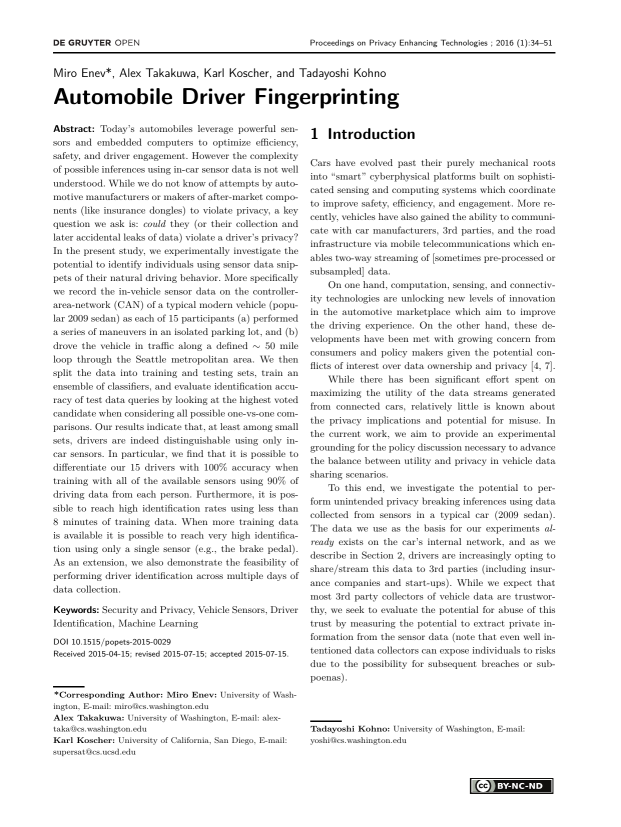Automobile Driver Fingerprinting
Authors: Miro Enev (University of Washington), Alex Takakuwa (University of Washington), Karl Koscher (University of California, San Diego), Tadayoshi Kohno (University of Washington)
Volume: 2016
Issue: 1
Pages: 34–51
DOI: https://doi.org/10.1515/popets-2015-0029
Abstract: Today’s automobiles leverage powerful sensors and embedded computers to optimize efficiency, safety, and driver engagement. However the complexity of possible inferences using in-car sensor data is not well understood. While we do not know of attempts by automotive manufacturers or makers of after-market components (like insurance dongles) to violate privacy, a key question we ask is: could they (or their collection and later accidental leaks of data) violate a driver’s privacy? In the present study, we experimentally investigate the potential to identify individuals using sensor data snippets of their natural driving behavior. More specifically we record the in-vehicle sensor data on the controllerarea-network (CAN) of a typical modern vehicle (popular 2009 sedan) as each of 15 participants (a) performed a series of maneuvers in an isolated parking lot, and (b) drove the vehicle in traffic along a defined ∼ 50 mile loop through the Seattle metropolitan area. We then split the data into training and testing sets, train an ensemble of classifiers, and evaluate identification accuracy of test data queries by looking at the highest voted candidate when considering all possible one-vs-one comparisons. Our results indicate that, at least among small sets, drivers are indeed distinguishable using only incar sensors. In particular, we find that it is possible to differentiate our 15 drivers with 100% accuracy when training with all of the available sensors using 90% of driving data from each person. Furthermore, it is possible to reach high identification rates using less than 8 minutes of training data. When more training data is available it is possible to reach very high identification using only a single sensor (e.g., the brake pedal). As an extension, we also demonstrate the feasibility of performing driver identification across multiple days of data collection.
Keywords: Security and Privacy, Vehicle Sensors, Driver Identification, Machine Learning
Copyright in PoPETs articles are held by their authors. This article is published under a Creative Commons Attribution-NonCommercial-NoDerivs 3.0 license.

